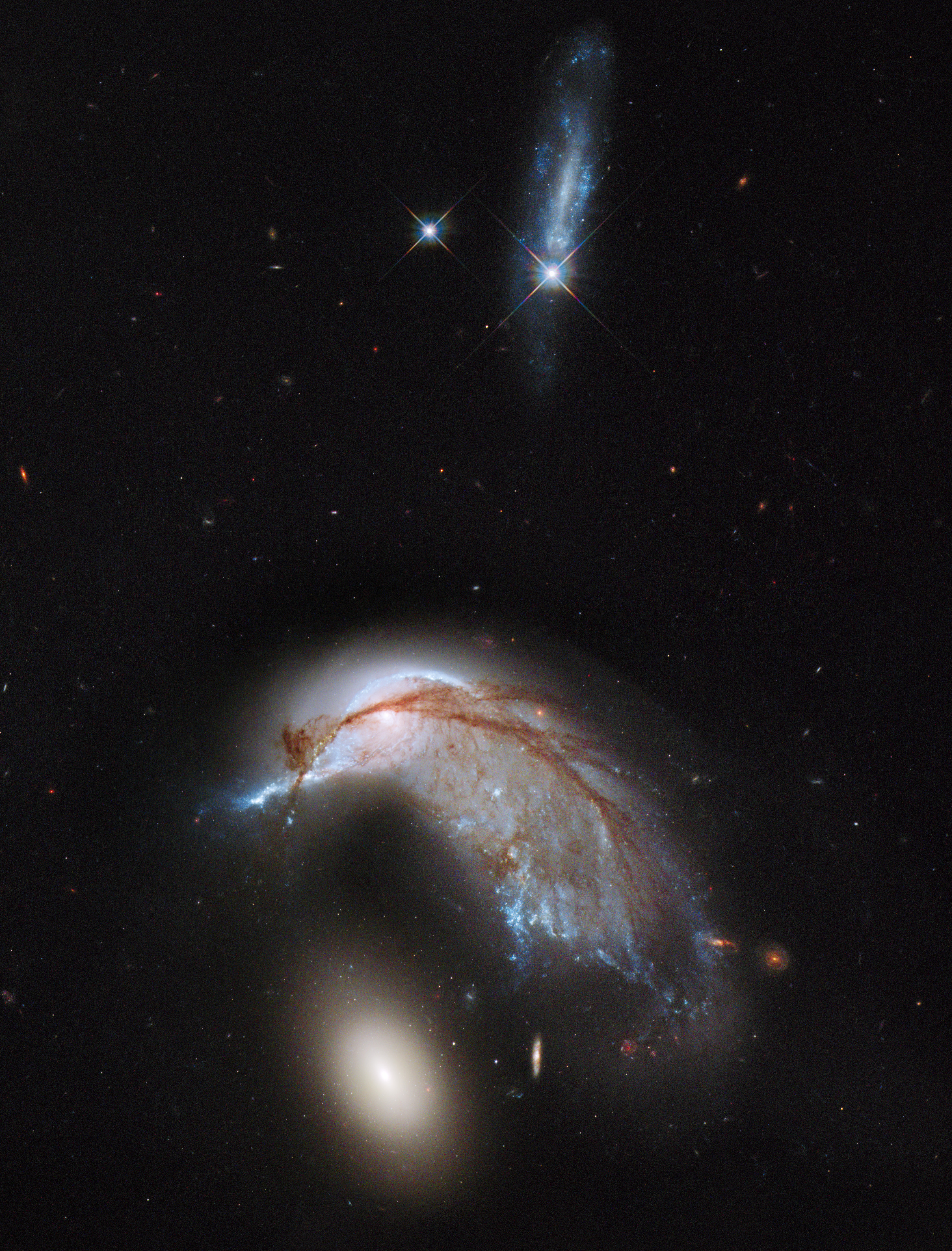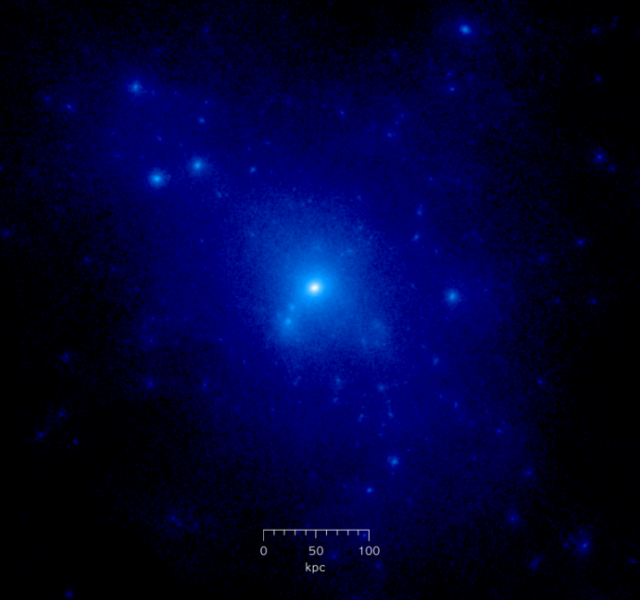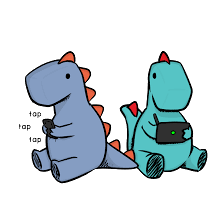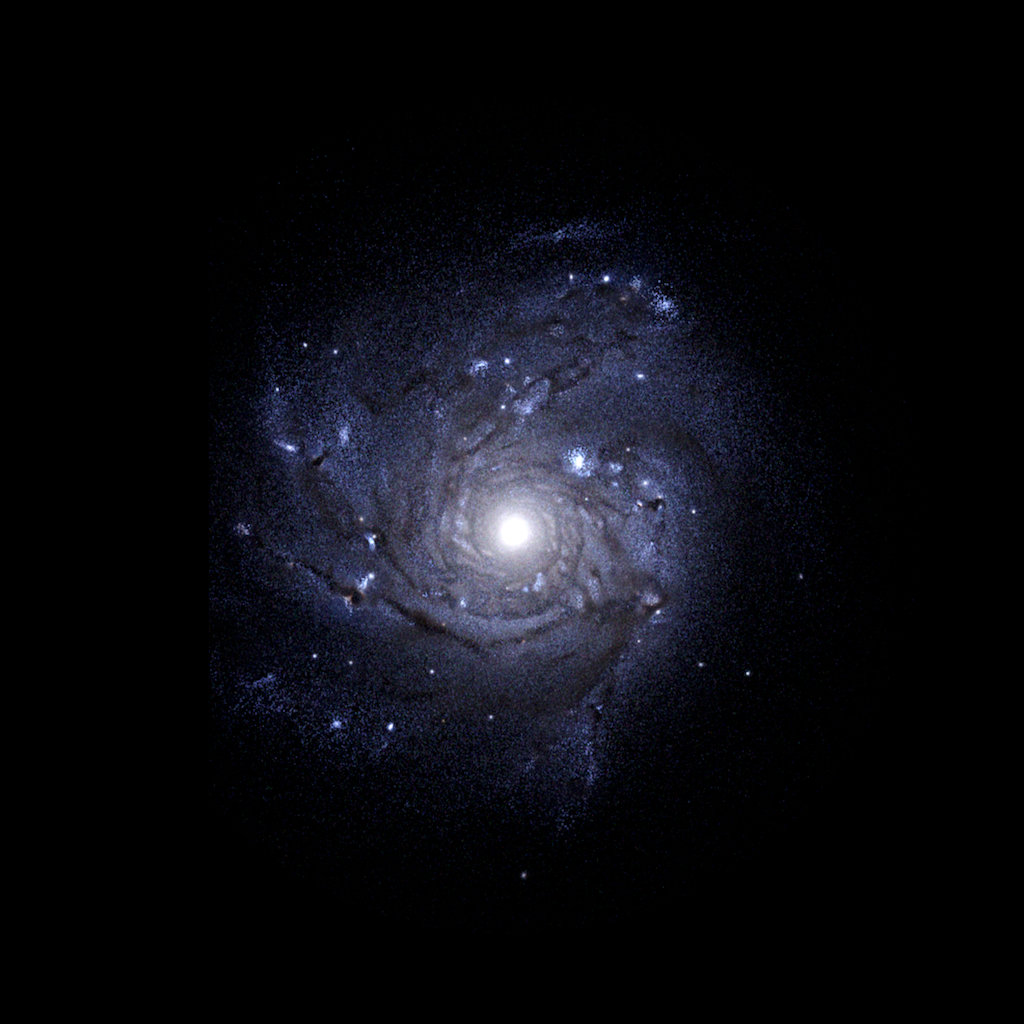The Universe in a box:
how do galaxies form?
Dr. Corentin Cadiou — Lund University
Credits: NASA & ESA


Sombrero galaxy
M83


“Penguin” galaxy
Magellanic clouds

M87 galaxy
What is a galaxy?
Credits: A. Russell/ESO
What is a galaxy?
Credits: A. Russell/ESO
- Hundreds of billions of stars*
- Dust
- Gas
- Dark matter
- Supermassive black holes
- Planets with humans on them!
* only true for Milky Way, may vary by orders of magnitude


Dust in the horsehead nebula, credits: HST
Star-forming region (Westerlund 2), credits: HST

SMBH in galaxy M87, credit: EHT

DM (in blue) in a simulation
Credits: Adams Evans
Observations in astronomy
Credits: Adams Evans
Observations in astronomy
Three key issues
- Distances are hard to measure



Credits: Adams Evans
Observations in astronomy
Three key issues
- Distances are hard to measure
- Times — seemingly no evolution




Credits: Adams Evans
Observations in astronomy
Three key issues
- Distances are hard to measure
- Times — seemingly no evolution




Today
Credits: Adams Evans
Observations in astronomy


thousand of kilometers
billions of billions kilometers

Three key issues
- Distances are hard to measure
- Times — seemingly no evolution
- Maaaany scales involved!
a few meters

NASA; ESA; and F. Summers
We use simulations like experiments
example: what will happen between the Vintergatan and the Andromeda galaxies?
Andromeda
NASA; ESA; and F. Summers
We use simulations like experiments
Milky Way (Vintergatan)
NASA; ESA; and F. Summers

... but how do we know?

© Ventusky


“If we have clouds and there is wind, the clouds move in the direction of the wind”
“If there is water and it is warm enough, clouds form”, …


Each bright dot is one galaxy



?
HST
- Create a box for space and time
- Include known physics
- Set some initial conditions
- Move time forward
- ☕*
-
SCIENCE!
- Compare to observations
- Make predictions
- …
How to simulate the Universe?
... and galaxies therein
* of the order of \( 10^6-10^7\ \mathrm{hr} \approx 100-1000\ \mathrm{yr} \)


- Create a box for space and time
- Include known physics
- Set some initial conditions
- Move time forward
- ☕*
-
SCIENCE!
- Compare to observations
- Make predictions
- …
How to simulate the Universe?
... and galaxies therein
* of the order of \( 10^6-10^7\ \mathrm{hr} \approx 100-1000\ \mathrm{yr} \)


- Create a box for space and time
- Include known physics
- Set some initial conditions
- Move time forward
- ☕
-
SCIENCE !
- Compare to observations
- Make predictions
- …
How to simulate the Universe?
... and galaxies therein
What recipes do we need?
The universe is expanding!

The universe is expanding!

Dark matter
\(80\%\) dark matter
\(20\%\) “gas”
<\(1\%\) light and other stuff
✅
Dark matter
Gas
\(80\%\) dark matter
\(20\%\) “gas”
<\(1\%\) light and other stuff
✅
✅
Gas
Stars
Dark matter
\(80\%\) dark matter
\(20\%\) “gas”
<\(1\%\) light and other stuff
✅
✅
✅
Gas
Stars
Dark matter



\(80\%\) dark matter
\(20\%\) “gas”
<\(1\%\) light, neutrinos, black holes, …
✅
✅
✅
We have a scenario for galaxy formation
We have a scenario for galaxy formation
- Formation of dark matter "halos"...
- ... and of the cosmic web
- Gas falls in, galaxies merge
- Gas condenses to form stars & black holes
- Stars & black holes expel gas



3C 348 seen by HST & VLA

Crab nebula seen by HST


Forming an elliptical galaxy...
Forming a spiral galaxy...
We can simulate galaxies on (super)computers
→ we can watch them in 3D!
→ we don't have to wait millions of years!
We can simulate galaxies on (super)computers
→ we can watch them in 3D!
→ we don't have to wait millions of years!
climate change
tens
We can simulate galaxies on (super)computers
→ we can watch them in 3D!
→ we don't have to wait millions of years!
climate change
tens
Resources (På engelska, förlåt!)
Lund's astronomy podcast: TheMeridian
Youtube channels:
@DrBecky, @CoolWorldsLab, @kurzgesagt
Tack för att du lyssna!
Same initial conditions
Same “physical model”
They will diverge eventually (simulations running at different paces + numerical errors)
3 parameters:
- coherence
- separation
- alignment
Same initial conditions
Different parameters
Same “Universe”
Different physical models
We have a scenario for galaxy formation
Can we test it?
Effect of physical parameters
Formation of stars
Formation of black holes
Feedback effects
[...]




Effect of physical parameters






Dubois+16







Black holes prevent the formation
of large spiral galaxies
Effect of physical parameters








Dubois+16



Different initial conditions
Same physical parameters
Different “Universe”
Same physical models
The initial conditions of the Universe
Our whole universe was in a hot, dense state*
Then nearly fourteen billion years ago expansion started, wait […]
*(and homogenous)

The initial conditions of the Universe

Planck satellite. Credits: ESA/NASA/JPL-Caltech
The initial conditions of the Universe

The initial conditions of the Universe

Initial conditions
Evolved Universe (+ galaxies)

The initial conditions of the Universe

Evolved Universe (+ galaxies)

The Universe is determined
by its initial conditions
Initial conditions = DNA of galaxies
Genetically modified galaxies?
\(14\ \mathrm{Gyr}\)





Adaptive Mesh Refinment
Domain decomposition
The initial conditions of the Universe
Initial conditions:
- Tiny density fluctuations \(\sim 0.001\% \)
-
Very well described mathematically*
→ easy to generate
*By a Gaussian random field with known spectrum







The initial conditions of the Universe
Initial conditions:
- Tiny density fluctuations \(\sim 0.001\% \)
-
Very well described mathematically*
→ easy to generate & constrain
"Splicing" method, Cadiou+ in prep.
The initial conditions of the Universe
"Splicing" method, Cadiou+ in prep.


\(14\ \mathrm{Gyr}\)
The initial conditions of the Universe


Galaxies are influenced by a region at least \( 100\times\) larger


"Splicing" method, Cadiou+ in prep.


Galaxies are influenced by a region at least \( 100\times\) larger

"Splicing" method, Cadiou+ in prep.
\(100\ \mathrm{kly}\)
\(10 \ \mathrm{Mly}\)


Forming galaxies...
New Horizon simulation — IAP, CNRS


50 million light year
50 million light year
Galaxies
- form in a "cosmic web"
- grow by accreting
- merge together
1 million light year
100,000 light year

The Universe in a box — how do galaxies form? | Låna en Forskare
By Corentin Cadiou
The Universe in a box — how do galaxies form? | Låna en Forskare
- 400



